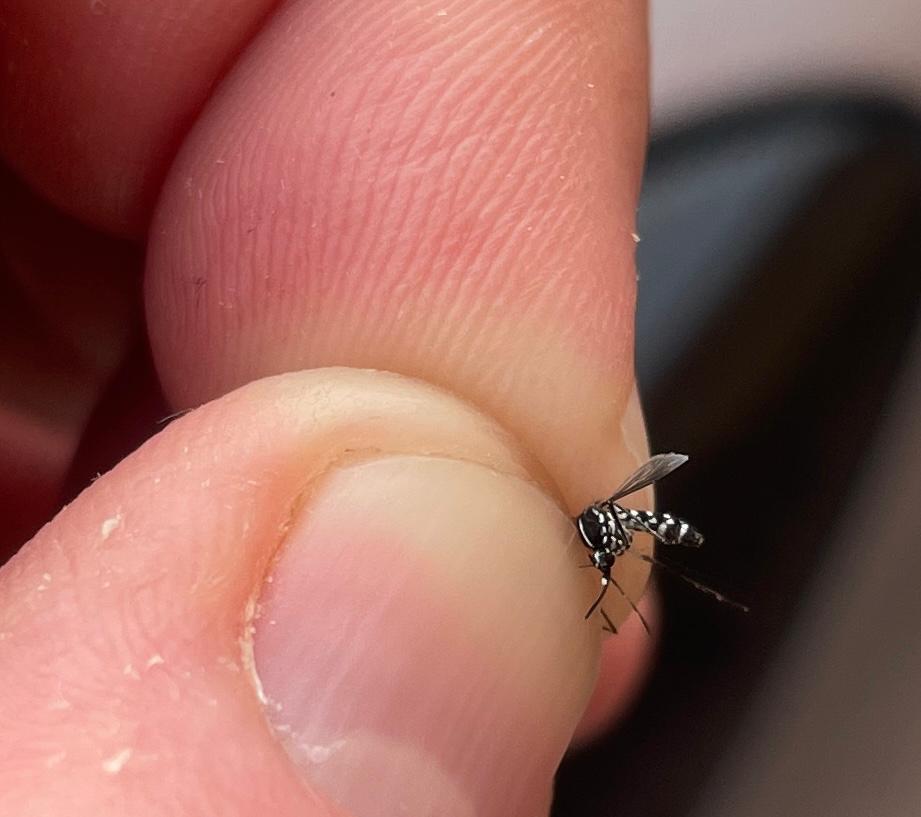Tiger mosquito, native to Southeast Asia, is an invasive species in Spain. In addition to causing important nuisance for humans due to the bites of the females, this species is able to transmit several pathogens affecting humans, such as dengue. A research team of the University of Granada, the Doñana Biological Station – CSIC, and Bioparc Fuengirola has studied the population dynamics of this invasive mosquito in the provinces of Granada and Malaga, in southern Spain. The study, published in the journal Scientific Reports, supports the evidence of the presence of stable populations of tiger mosquito throughout most of the year in these provinces and helps determine the factors influencing mosquitoes captures.
The distribution of tiger mosquito has significantly increased worldwide in the last decades. It is considered as one of the top 100 most dangerous invasive species on the planet, due to its capacity to adapt and colonize new areas and to spread some viruses. In Spain, it was detected for the first time in 2004 in the province of Barcelona, but it has rapidly invaded other areas. Southern Spain is one of the recently invaded areas.
To carry out this study, tiger mosquito populations were sampled in five localities in the provinces of Granada and Malaga in Andalusia, with different degrees of urbanization. The researchers recorded the presence of tiger mosquitoes in all localities sampled, although other species such as the common mosquito (Culex pipiens) show higher abundance in this region. In addition, active individuals of tiger mosquito were detected from May to November, which confirms its presence throughout most of the year.
In this work, differences between the different localities sampled were found, suggesting that environmental local conditions are determinant in the abundance of tiger mosquitoes in these areas. One of them is, for instance, the availability of water accumulations, which allow this species to breed. "Although our design was not optimized to identify differences between habitats, we could observed that the highest number of captures was recorded in urban areas in the province of Malaga, while we captured the lowest abundance of invasive mosquitoes in the less urbanized areas in Granada", explains Mario Garrido, researcher at the University of Granada.
The trap type also conditioned the number of captured mosquitoes. The researchers found a majority of females, which are the ones that can transmit pathogens, since they are the only hematophagous sex, that is, that feeds on blood. The tiger mosquito feeds most frequently on human blood. However, it may occasionally feed on the blood of other animals, including other mammals and birds.
"This is the first study that identifies the population dynamics of tiger mosquitoes throughout the year in Andalusia, which is the first approach to know the importance of this species in their environment and outline management strategies", explains Josué Martínez de la Puente, CSIC researcher at the Doñana Biological Station. "Avoiding water accumulations on pot dishes, for example, is a good initiative to avoid the creation of breeding areas for these mosquitoes".
These results have been obtained in the context of the Microvec (PID2020-118205GB-I00) and AedesMicrobiota (CNS2022-135993) projects of the AEI of the Ministry of Science and Innovation.
Garrido, M., Veiga, J., Garrigós, M. et al. Aedes albopictus in a recently invaded area in Spain: effects of trap type, locality, and season on mosquito captures. Sci Rep 14, 2131 (2024). https://doi.org/10.1038/s41598-024-52040-4
Contact:
outreach @ ebd.csic.es









 Las altas temperaturas están provocando que las lagunas y las marismas de Doñana pierdan agua rápidamente
Las altas temperaturas están provocando que las lagunas y las marismas de Doñana pierdan agua rápidamente



